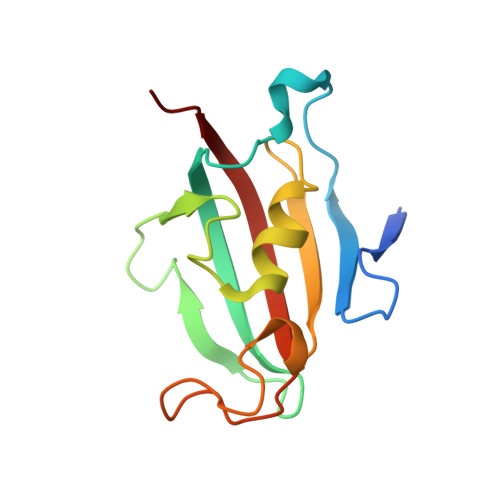Crystal Structure of the Fk506 Binding Domain of Plasmodium Falciparum Fkbp35 in Complex with Fk506.
Kotaka, M., Ye, H., Alag, R., Hu, G., Bozdech, Z., Preiser, P.R., Yoon, H.S., Lescar, J.(2008) Biochemistry 47: 5951
- PubMed: 18465874
- DOI: https://doi.org/10.1021/bi800004u
- Primary Citation of Related Structures:
2VN1 - PubMed Abstract:
The emergence of multi-drug-resistant strains of Plasmodium parasites has prompted the search for alternative therapeutic strategies for combating malaria. One possible strategy is to exploit existing drugs as lead compounds. FK506 is currently used in the clinic for preventing transplant rejection. It binds to a alpha/beta protein module of approximately 120 amino acids known as the FK506 binding domain (FKBD), which is found in various organisms, including human, yeast, and Plasmodium falciparum (PfFKBD). Antiparasitic effects of FK506 and its analogues devoid of immunosuppressive activities have been demonstrated. We report here the crystallographic structure at 2.35 A resolution of PfFKBD complexed with FK506. Compared to the human FKBP12-FK506 complex reported earlier, the structure reveals structural differences in the beta5-beta6 segment that lines the FK506 binding site. The presence in PfFKBD of Cys-106 and Ser-109 (substituting for His-87 and Ile-90, respectively, in human FKBP12), which are 4-5 A from the nearest atom of the FK506 compound, suggests possible routes for the rational design of analogues of FK506 with specific antiparasitic activity. Upon ligand binding, several conformational changes occur in PfFKBD, including aromatic residues that shape the FK506 binding pocket as shown by NMR studies. A microarray analysis suggests that FK506 and cyclosporine A (CsA) might inhibit parasite development by interfering with the same signaling pathways.
Organizational Affiliation:
School of Biological Sciences, Nanyang Technological University, 60 Nanyang Drive, Singapore 637551, and AFMB, CNRS UMR6098, Marseille 13288, France. julien@ntu.edu.sg















